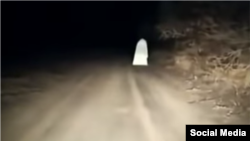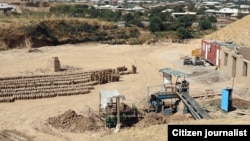
Halloween is over, but locals in a part of western Kazakhstan say something scary prowls the roads at night and lurks around their village.
The fear that has gripped the village of Khankol was sufficient to prompt West Kazakhstan Province Governor Gali Iskaliev to send police to investigate reports of a ghost.
The Kazakh news site Tengrinews.kz broke the story on November 11.
“Residents of the small village of Khankol in the Karatobin district claim that in the vicinity of their settlement, the ghost of a woman with light-colored hair appears. The people are very frightened, even men are crying from fear."
Locals have posted stories of the ghost on social networks.
“[The ghost] came toward a freight truck and the man almost got into an accident. Then the girl disappeared. The driver came to the village, but local residents say they didn’t see the ghost. People started reading the Koran,” one post said.
Other stories claimed the ghost knocked on car windows or even appeared in vehicles and attempted to force drivers to veer off the road.
Tales of the ghost spread to neighboring areas.
Talal Kaziev is the head of the nearby village of Zhusandoi.
“I also travel these roads and I have never seen any such thing,” Kaziev told Tengrinews. “Maybe people are exaggerating, but there is a lot of talk about a mysterious woman.”
He and others from his settlement came to Khankol to participate in a sadaka, the ritual sacrifice of an animal, in this case a sheep, to rid the area of evil spirits.
The tales were enough to convince Governor Iskaliev to send police to Khankol to investigate.
“This is undoubtedly unreliable information or someone is playing a joke,” Iskaliev told the local newspaper Nadezhda. “[But] I will order police to go and check it out."
Tengrinews wrote that police are now tasked with trying to discover whether this is a prank, the result of a mass hallucination “and, just in case, how much moonshine is produced per capita in the Karatobin district.”








